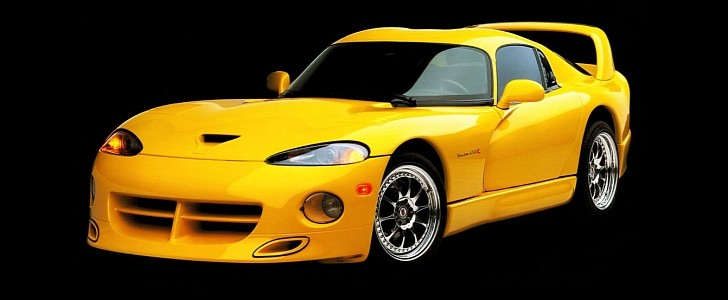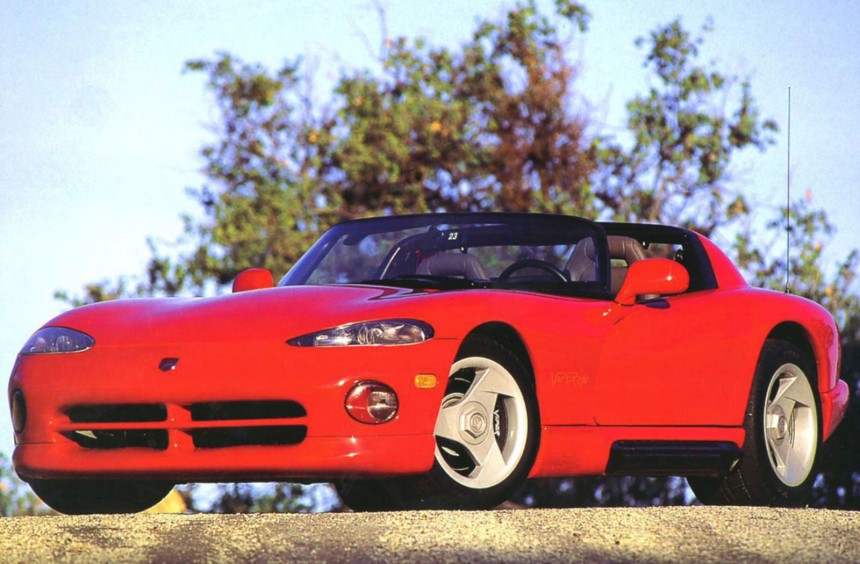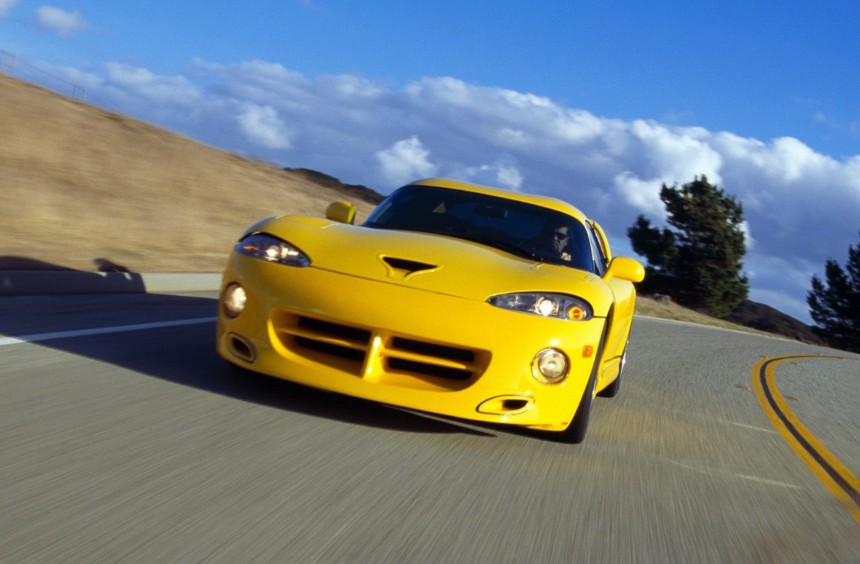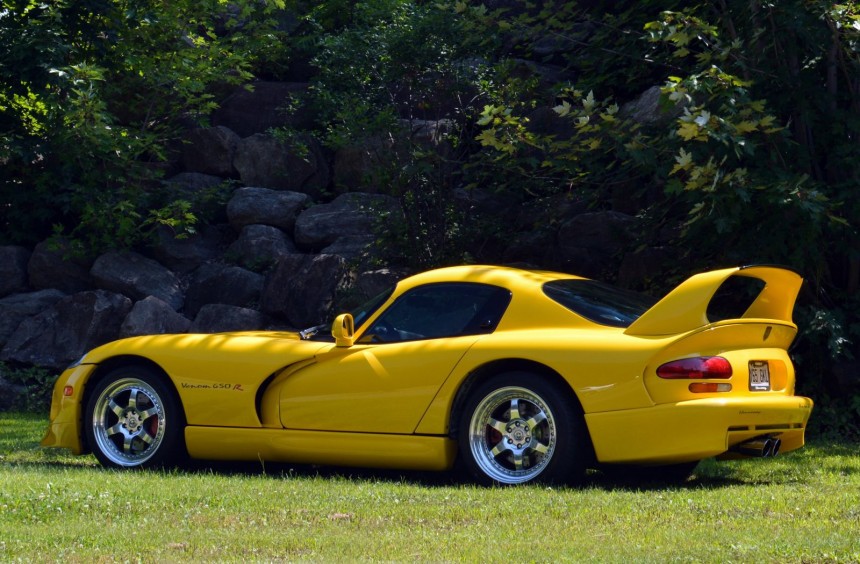Today, Hennessey Performance Engineering is a tuning house revered around the world for transforming stock vehicles into road-legal monsters capable of producing over 1,000 hp. It all started in the 1990s and one of the company’s most successful projects was the amazing Venom 650R.
Back in the 1990s, the Dodge Viper was one of the most spectacular sports cars out there. When the pre-production version made its debut at the Indianapolis 500 in 1991 with Carroll Shelby behind the wheel, it hid a 400-hp V10 under its humongous hood. Designed with help from Lamborghini, the engine made its way into the production Viper, becoming a cornerstone for all future models and earning its place among the most iconic American-built powerplants of all time.
As Chrysler was applying the finishing touches on its amazing roadster, an ambitious Texan with a passion for fast cars by the name of John Hennessey founded Hennessey Performance Engineering (HPE).
Working in a small, rented garage alongside a single technician, he began modifying turbochargers and intake/exhaust systems for various cars, mainly the Mitsubishi 3000GT and its Dodge Stealth sibling.
In 1993 a customer who wanted to enter his Viper in Nevada open road races asked Hennessey to squeeze more power out of the mighty V10. The company delivered, and the first Venom 500 was born.
For the following years, the focus shifted to modifying more of these outstanding sports cars and HPE begins developing a range of aftermarket parts. They were deemed so good that a Belgian racing team used them to upgrade two Vipers which they entered in the legendary 24 Hours of Le Mans endurance race.
Soon after Chrysler released the second-generation Viper in 1996, Hennessey got his hands on an example of the new coupe dubbed GTS which also debuted that year and began work on an outrageous, high-performance variant.
After an arduous development process, the Venom 650R hit the streets, becoming not just the fastest, most powerful Viper one could own, but also one of the fastest cars in the world.
Motor Trend reviewed it in the summer of 1999, praising its exceptional all-around performance and calling it the fastest street car they ever tested. This wasn’t an exaggeration since they managed to record a 0 to 60 mph (0-97 kph) time of 3.3 seconds which was faster than an F50, the road-regal Ferrari powered by a Formula 1-derived V12.
The 650R could also run the quarter-mile (402 m) in 11.2 seconds according to the same magazine, about 0.7 seconds faster than the F50 and more than a second faster than the stock 1997 GTS. There were only a few limited-production unicorns out there capable of beating it, such as the Mercedes CLK GTR.
The mind-blowing figures don’t stop there as this wild machine could reportedly reach a top speed of 215 mph (346 kph). However, this was purely theoretical, since the only 650R that came close was a 1997 pre-production version driven by John Hennessey that managed to reach 203 mph (327 kph) at the Honda proving grounds in Arizona. With journalists from the Motor Trend in attendance, it became the first Viper to hit 200 mph (322 kph).
Those who wanted to own one had to send their stock GTS to Hennessey where it could be equipped with several upgrade packages. The first and most important of them was the $37,000 ($60,921 today) engine upgrade. It increased the V10’s displacement from 8.0 liters (488 ci) to 8.4 liters (514 ci) and added several enhanced components, including forged steel connecting rods (or titanium rods for an extra $3,500), forged aluminum pistons, bigger stainless-steel valves, new guides, titanium retainers, a bespoke camshaft, or billet throttle bodies fed by a competition airbox. A new exhaust system was also fitted and although it retained the factory catalytic converters, it included bypass valves.
With this package installed, the car became a venomous beast capable of 650 hp as well as 650 lb-ft (884 Nm) of torque, both measured at the crankshaft. As you may have guessed, these figures inspired its name.
With all that power under the hood, it needed suitable suspension and braking systems, both of which could be installed for an additional $18,500 ($30,460 today). These two packages included a Penske adjustable suspension system with 30 variable damping settings and a race-spec Brembo brake kit.
Finally, to distinguish it from the factory-built GTS, the car could be equipped with a VenomAero carbon fiber (or fiberglass) body kit which included aero enhancements and functional brake cooling ducts. Add a special paint, 18-inch wheels, racing bucket seats, or a roll bar and you got a fully optioned-out 650R for about $111,000 ($181,117 today), excluding the price of the stock GTS. Yes, it was an expensive investment, but it was much cheaper than any supercar you could buy at the time. For example, the CLK GTR, one of the few vehicles that were faster back then, could be had for nearly ten times more money.
Hennessey continued to upgrade the Viper until the model was discontinued in 2017. Far more powerful variants followed, but the Venom 650R is considered one of the most important projects in the history of the American tuning house.
In the video below posted on YouTube by Roads Untraveled, you can admire Rob Sinneave’s unique example, the first 650R ever built, a car once owned by John Hennessey, and the one that Motor Trend tested back in 1999.
As Chrysler was applying the finishing touches on its amazing roadster, an ambitious Texan with a passion for fast cars by the name of John Hennessey founded Hennessey Performance Engineering (HPE).
Working in a small, rented garage alongside a single technician, he began modifying turbochargers and intake/exhaust systems for various cars, mainly the Mitsubishi 3000GT and its Dodge Stealth sibling.
For the following years, the focus shifted to modifying more of these outstanding sports cars and HPE begins developing a range of aftermarket parts. They were deemed so good that a Belgian racing team used them to upgrade two Vipers which they entered in the legendary 24 Hours of Le Mans endurance race.
Soon after Chrysler released the second-generation Viper in 1996, Hennessey got his hands on an example of the new coupe dubbed GTS which also debuted that year and began work on an outrageous, high-performance variant.
Motor Trend reviewed it in the summer of 1999, praising its exceptional all-around performance and calling it the fastest street car they ever tested. This wasn’t an exaggeration since they managed to record a 0 to 60 mph (0-97 kph) time of 3.3 seconds which was faster than an F50, the road-regal Ferrari powered by a Formula 1-derived V12.
The 650R could also run the quarter-mile (402 m) in 11.2 seconds according to the same magazine, about 0.7 seconds faster than the F50 and more than a second faster than the stock 1997 GTS. There were only a few limited-production unicorns out there capable of beating it, such as the Mercedes CLK GTR.
The mind-blowing figures don’t stop there as this wild machine could reportedly reach a top speed of 215 mph (346 kph). However, this was purely theoretical, since the only 650R that came close was a 1997 pre-production version driven by John Hennessey that managed to reach 203 mph (327 kph) at the Honda proving grounds in Arizona. With journalists from the Motor Trend in attendance, it became the first Viper to hit 200 mph (322 kph).
With this package installed, the car became a venomous beast capable of 650 hp as well as 650 lb-ft (884 Nm) of torque, both measured at the crankshaft. As you may have guessed, these figures inspired its name.
With all that power under the hood, it needed suitable suspension and braking systems, both of which could be installed for an additional $18,500 ($30,460 today). These two packages included a Penske adjustable suspension system with 30 variable damping settings and a race-spec Brembo brake kit.
Hennessey continued to upgrade the Viper until the model was discontinued in 2017. Far more powerful variants followed, but the Venom 650R is considered one of the most important projects in the history of the American tuning house.
In the video below posted on YouTube by Roads Untraveled, you can admire Rob Sinneave’s unique example, the first 650R ever built, a car once owned by John Hennessey, and the one that Motor Trend tested back in 1999.














